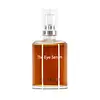What's inside
What's inside
 Key Ingredients
Key Ingredients

 Benefits
Benefits

 Concerns
Concerns

No concerns
 Ingredients Side-by-side
Ingredients Side-by-side

Water
Skin ConditioningPropanediol
SolventCichorium Intybus Root Extract
MaskingGlycerin
HumectantHydroxypropyl Starch Phosphate
Microcrystalline Cellulose
AbsorbentSilica
AbrasiveSodium Polyacrylate
AbsorbentAcetyl Tetrapeptide-5
HumectantBacillus Ferment
Skin ConditioningCaesalpinia Spinosa Fruit Extract
Skin ProtectingCaesalpinia Spinosa Gum
Skin ConditioningCaffeine
Skin ConditioningCalcium Gluconate
HumectantCaprylic/Capric Triglyceride
MaskingCitric Acid
BufferingGluconolactone
Skin ConditioningGlyceryl Caprylate
EmollientKaolin
AbrasiveKappaphycus Alvarezii Extract
Skin ConditioningLevulinic Acid
PerfumingPunica Granatum Pericarp Extract
Skin ConditioningSodium Hyaluronate
HumectantSodium Levulinate
Skin ConditioningSodium Phytate
Xanthan Gum
EmulsifyingSodium Benzoate
MaskingWater, Propanediol, Cichorium Intybus Root Extract, Glycerin, Hydroxypropyl Starch Phosphate, Microcrystalline Cellulose, Silica, Sodium Polyacrylate, Acetyl Tetrapeptide-5, Bacillus Ferment, Caesalpinia Spinosa Fruit Extract, Caesalpinia Spinosa Gum, Caffeine, Calcium Gluconate, Caprylic/Capric Triglyceride, Citric Acid, Gluconolactone, Glyceryl Caprylate, Kaolin, Kappaphycus Alvarezii Extract, Levulinic Acid, Punica Granatum Pericarp Extract, Sodium Hyaluronate, Sodium Levulinate, Sodium Phytate, Xanthan Gum, Sodium Benzoate
Pisum Sativum Extract
Skin ConditioningMorus Alba Extract
AstringentFucus Vesiculosus Extract
EmollientSus Extract
Skin ConditioningPropanediol
SolventGlycerin
HumectantGlycyrrhiza Glabra Root Extract
BleachingAesculus Hippocastanum Extract
AntioxidantHydrolyzed Rice Bran Protein
Skin ConditioningGlycine Soja Protein
EmulsifyingOxido Reductases
Skin ConditioningElastin
Skin ConditioningAlpha-Arbutin
AntioxidantUrsolic Acid
MaskingPhenoxyethanol
PreservativeCitric Acid
BufferingSorbic Acid
PreservativePisum Sativum Extract, Morus Alba Extract, Fucus Vesiculosus Extract, Sus Extract, Propanediol, Glycerin, Glycyrrhiza Glabra Root Extract, Aesculus Hippocastanum Extract, Hydrolyzed Rice Bran Protein, Glycine Soja Protein, Oxido Reductases, Elastin, Alpha-Arbutin, Ursolic Acid, Phenoxyethanol, Citric Acid, Sorbic Acid
Ingredients Explained
These ingredients are found in both products.
Ingredients higher up in an ingredient list are typically present in a larger amount.
Citric Acid is an alpha hydroxy acid (AHA) naturally found in citrus fruits like oranges, lemons, and limes.
Like other AHAs, citric acid can exfoliate skin by breaking down the bonds that hold dead skin cells together. This helps reveal smoother and brighter skin underneath.
However, this exfoliating effect only happens at high concentrations (20%) which can be hard to find in cosmetic products.
Due to this, citric acid is usually included in small amounts as a pH adjuster. This helps keep products slightly more acidic and compatible with skin's natural pH.
In skincare formulas, citric acid can:
While it can provide some skin benefits, research shows lactic acid and glycolic acid are generally more effective and less irritating exfoliants.
Most citric acid used in skincare today is made by fermenting sugars (usually from molasses). This synthetic version is identical to the natural citrus form but easier to stabilize and use in formulations.
Read more about some other popular AHA's here:
Learn more about Citric AcidGlycerin is already naturally found in your skin. It helps moisturize and protect your skin.
A study from 2016 found glycerin to be more effective as a humectant than AHAs and hyaluronic acid.
As a humectant, it helps the skin stay hydrated by pulling moisture to your skin. The low molecular weight of glycerin allows it to pull moisture into the deeper layers of your skin.
Hydrated skin improves your skin barrier; Your skin barrier helps protect against irritants and bacteria.
Glycerin has also been found to have antimicrobial and antiviral properties. Due to these properties, glycerin is often used in wound and burn treatments.
In cosmetics, glycerin is usually derived from plants such as soybean or palm. However, it can also be sourced from animals, such as tallow or animal fat.
This ingredient is organic, colorless, odorless, and non-toxic.
Glycerin is the name for this ingredient in American English. British English uses Glycerol/Glycerine.
Learn more about GlycerinPropanediol is an all-star ingredient. It softens, hydrates, and smooths the skin.
It’s often used to:
Propanediol is not likely to cause sensitivity and considered safe to use. It is derived from corn or petroleum with a clear color and no scent.
Learn more about Propanediol